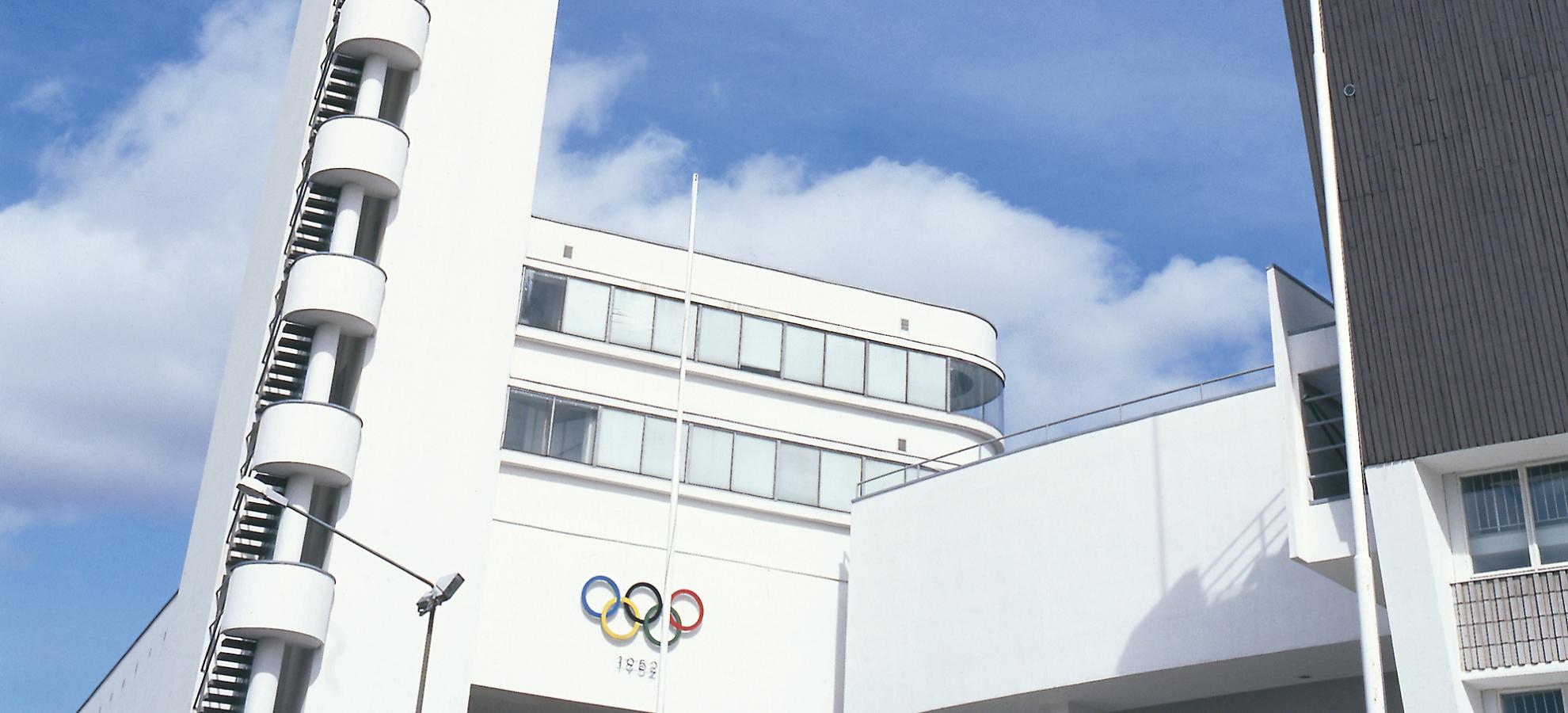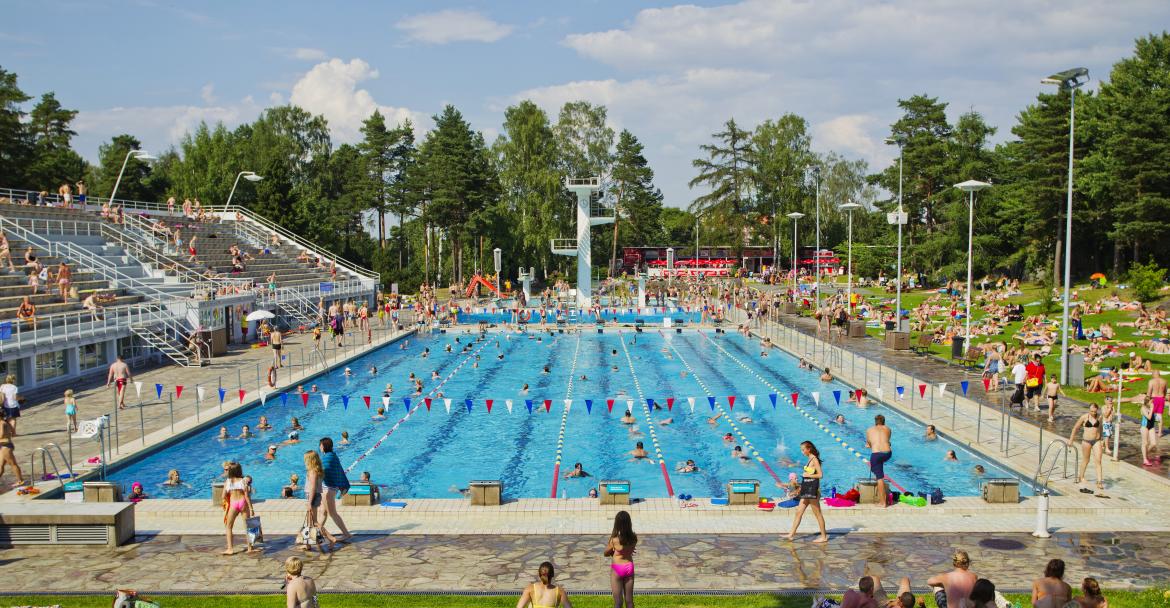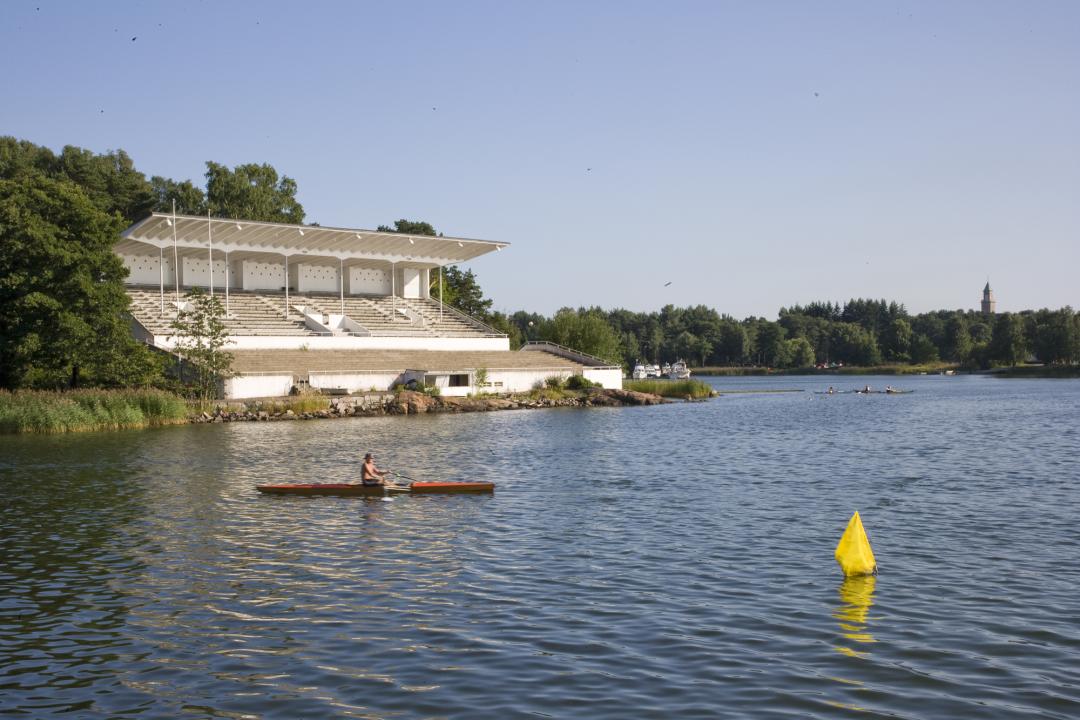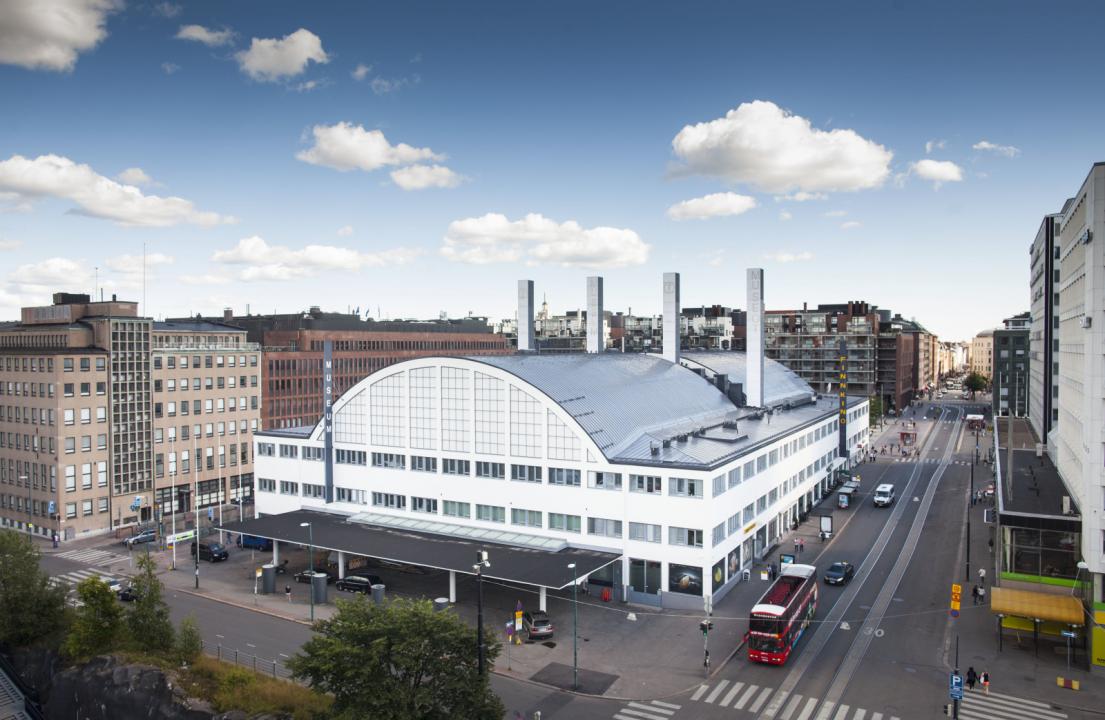
The Olympic buildings in Helsinki are located throughout the city and comprise both world-class sports arenas and versatile recreational areas that are used by the public. The features they share in common include the same concrete construction solutions, exposed structures, simple and unadorned surfaces, and concrete sections that have been finished in white. The multifunctional design of these buildings is revealed in how they continue to be used on an everyday basis.
Helsinki was originally meant to host the 1940 Summer Olympics after Japan forfeited the Games in 1937; Helsinki had been the runner-up to Japan in the original bidding process. Helsinki began to prepare for the Olympics and the arrival of athletes and visitors from around the world. Construction work began on sports arenas and services, including hotels and ferry terminals. Hosting the Olympics was greeted as a chance to develop the city, but unfortunately the Games had to be cancelled in spring 1940 due to the outbreak of the Second World War.
After London hosted the Summer Olympics in 1948, the Games finally made it to Helsinki in 1952. The Olympic buildings that had been constructed in the 1930s were finally used for their original purpose, although the stands at some of the venues had to be expanded.
Olympic Stadium
The main venue of the 1952 Summer Olympics stands proudly in the centre of the Eläintarha Sports Park behind the Töölönlahti bay surrounded by other sports facilities. The 72-metre Stadium Tower stands as a symbol of both the Olympics and Finnish sports, and it is one of the main landmarks in the city. More info from the Olympic Stadium's website.

Swimming Stadium
The Swimming Stadium is situated in the middle of a natural rocky park just to the northeast of the Olympic Stadium. The first outdoor swimming complex in Finland, it comprises three separate pools. The Swimming Stadium is open to the public throughout the summer season from early June to the middle of September.
Kumpula Outdoor Swimming Pool
Originally built as a practice pool for the Summer Olympics, the Kumpula Outdoor Swimming Pool is smaller than the Swimming Stadium but just as popular in summertime. The third oldest outdoor swimming complex in Finland, it is open to the public from early June to late August.
Töölö Sports Hall
Originally built in 1935 as an exhibition and event centre, this enormous hall was used during the Summer Olympics for the boxing, wrestling and gymnastics events. These days, Töölö Sports Hall is used by a very diverse range of local fitness exercisers.
Ruskeasuo Riding Centre
Ruskeasuo Riding Centre comprises a stylish indoor hall and stables in Central Park (Keskuspuisto). Although the hall was not used for riding events during the Summer Olympics, the adjacent ring was used for the dressage event. These days only around half the indoor hall is used for horse riding, while the other half is used for other recreational purposes.

Rowing Stadium
The Rowing Stadium overlooks the Taivallahti bay at a point that demarked the finish line for the canoeing events. Despite its name, the venue could not be used for the Olympic rowing events due to the strong winds from the sea. Instead, the rowing events were held in more sheltered waters in nearby Meilahti, while the Rowing Stadium was used only the canoeing events. Although the stadium is closed to the public, the waters in the area are still used for rowing and swimming.
Velodrome
The first banked cycling track in Finland was built originally for the 1940 Summer Olympics and can be found in Käpylä Sports Park. Concrete structures were used to create the banking, and there are covered stands with 2000 seats along the southwestern side. In addition to the track cycling events, the venue was used for field hockey during the 1952 Summer Olympics. The Velodrome is still in use, and the infield is now covered in artificial turf and used for field hockey, American football and lacrosse.

Tennis Palace
The Tennis Palace in Kamppi got its name from the four hardwood tennis courts that were once housed beneath the tall arched roof. It was originally built as a car showroom and parking garage, and the sports facilities on the top floor were used for the basketball matches during the Olympics. These days the Tennis Palace is a cultural centre that houses the Helsinki Art Museum (HAM) and the largest cinema complex Finnkino Tennispalatsi in Finland.
Olympic Terminal
The ferry terminal in the South Harbour was built ahead of the 1952 Summer Olympics and reflects the fine architectural development of the city’s waterfront. The Olympic Terminal is still used by ferries operating to and from Stockholm.

Glass Palace (Lasipalatsi)
Lasipalatsi was originally designed as a temporary building to house services for visitors to the 1940 Summer Olympics. Fortunately, this landmark of Functionalist architecture was never demolished and remains one of the most iconic landmarks in the city centre. The new Amos Rex art museum opened in autumn 2018.
Olympic Villages (Olympiakylä and Kisakylä)
Two residential areas were built in the Käpylä district to accommodate the Olympic athletes. Olympiakylä was built for the 1940 Summer Olympics and represents an early Finnish interpretation of a modern residential area. The light-coloured three- and four-storey apartment buildings feature appealing architectural solutions that were utilised again in Kisakylä, which was built for the 1952 Summer Olympics. Kisakylä was the single biggest construction project for the 1952 Olympics, and it was built to accommodate around five thousand male athletes.
Further information about Helsinki’s Olympic buildings can be found here on the website of the National Board of Antiquities (in Finnish).
